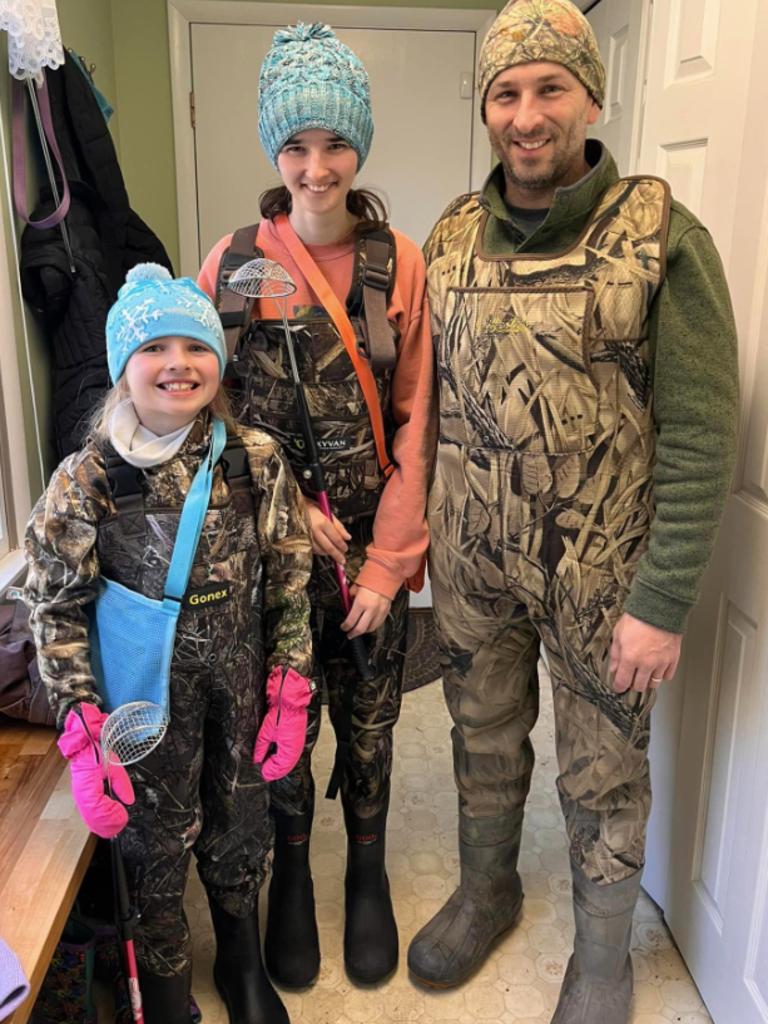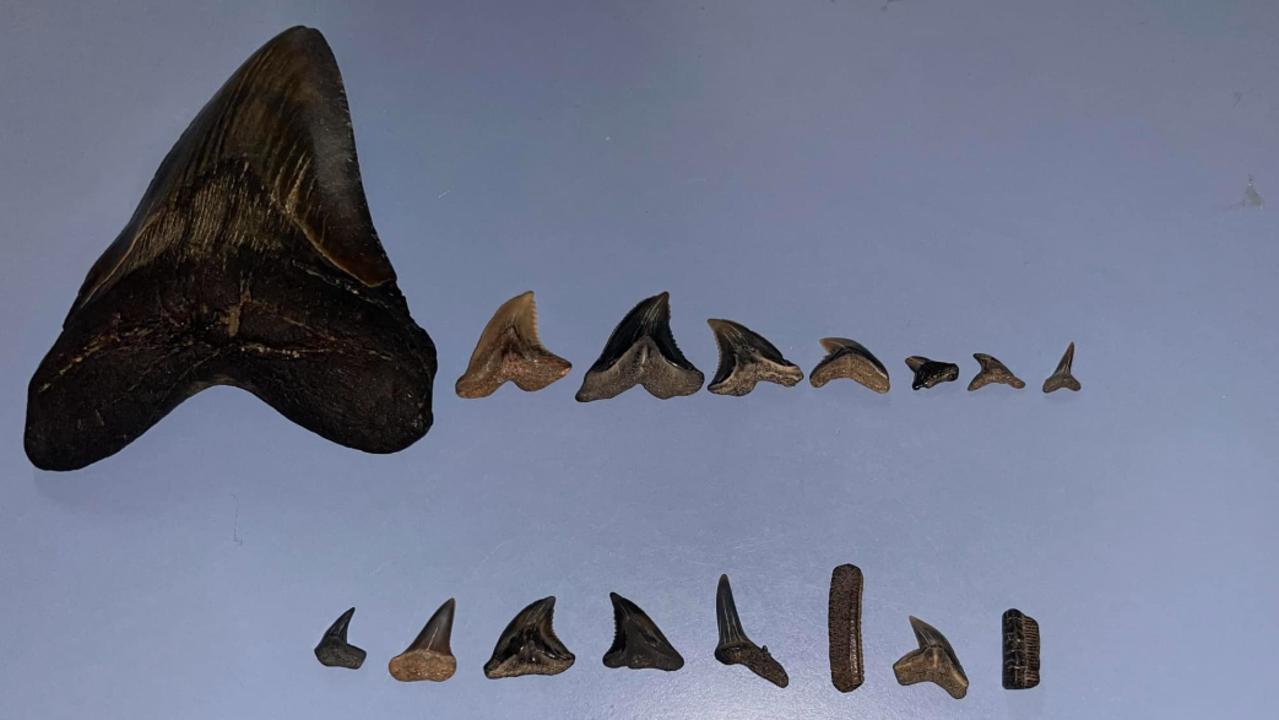Girl finds 15-million-year-old megalodon tooth in US
Nine-year-old aspiring palaeontologist Molly Sampson certainly had a Christmas Day to remember when she found an ancient megalodon tooth on a fossil hunt at the beach

READING LEVEL: GREEN
A nine-year-old aspiring* palaeontologist* has discovered an ancient and rare megalodon shark tooth on a Christmas Day fossil hunt at the beach.
In a now viral Facebook post, fourth grader Molly Sampson was pictured holding in her small hands a 15-million-year old megalodon tooth after she discovered the rare treasure during a family visit to Calvert Beach in Maryland in the US.
Molly’s mother, Alicia Sampson, said her daughter had the “best Christmas ever” after finding the massive 12.7cm tooth.
Molly and sister Natalie had requested insulated* waders* as their Christmas present so they could go “shark’s tooth hunting like professionals”.

“Look at the size of the tooth Molly just found,” her mother said in the Facebook post. “This tooth was in the water, so thanks to the waders she got the best part of her present!!”
Lucky Molly found the massive tar coloured tooth belonging to the now extinct Otodus megalodon shark species while splashing around in chilly and knee-deep water.
Megalodon, meaning “big tooth” in Ancient Greek, lived in waters around the world but died out at least 3.5 million years ago.
The animals stretched up to more than 20m in length, one of the largest fish to have existed.

“She told me she was wading in knee deep water when she saw it and dove in to get it,” Ms Sampson told CBS News.
“She said she got her arms all wet, but it was so worth it.”
Molly had already found more than 400 teeth, albeit* much smaller than her Christmas Day discovery, but she always hoped to find a “meg”.

The family took Molly’s amazing discovery to the Calvert Marine Museum, whose palaeontology experts confirmed the shark‘s identity and congratulated the “future palaeontologist” on social media.
“People should not get the impression that teeth like this one are common along Calvert Cliffs,” said the museum’s curator*, Stephen Godfrey.
“And she didn‘t have to dig into the cliffs to find the tooth, it was out in the water.”
Mr Godfrey said amateur* fossil hunters typically found about 100 megalodon teeth on Calvert Cliffs each year. But most of them were much smaller than Molly’s huge find.
The largest megalodon tooth ever found was almost 19cm long and was discovered in the Ocucaje desert in Peru.
GLOSSARY
- aspiring: wishing to become successful in a particular type of job
- palaeontologist: scientist who studies fossils
- insulated: covered in or containing a material to keep heat escaping or entering
- waders: waterproof garments
- albeit: though
- curator: person who oversees or manages a museum, art collection or exhibition
- amateur: not professional
EXTRA READING
Whales a bite-size snack for ancient megalodon
Megalodon loses food fight with great white shark
Great white sharks in growth spurt
QUICK QUIZ
- How big was the tooth Molly found?
- What did Molly get for Christmas that helped her with her discovery?
- Where did Molly find the tooth?
- What does megalodon mean in Ancient Greek?
- In which country was the largest megalodon tooth found?
LISTEN TO THIS STORY
CLASSROOM ACTIVITIES
1. Write a story
“It was so worth it!” Write a story or describe an experience inspired by this sentence.
Time: allow 30 minutes to complete this activity
Curriculum Links: English
2. Extension
How do you think the scientists were able to prove the tooth Molly found belonged to a rare megalodon shark? Write a list of the steps or techniques they would use to confirm what kind of tooth it is and its age. Use your research skills to find out more about identification and dating methods used by palaeontologists to help you write your list.
Time: allow 45 minutes to complete this activity
Curriculum Links: English, Science, History
VCOP ACTIVITY
A fossil find!
Imagine wading along in the water and coming across a tooth the size of your hand! If it was me, I’d be getting out of the water pretty quickly. Luckily, it wasn’t a fresh white tooth, but rather a black tar covered one.
Write up an article about Molly’s discovery for Calvert Beach’s local newspaper.
Why do you think the museum curator said: “People should not get the impression that teeth like this one are common along Calvert Cliffs. And she didn‘t have to dig into the cliffs to find the tooth, it was out in the water”?
Make sure you include your reasons why in the article you are writing.
Remember to re-read to make sure your paragraphs are clear and make sense. Use your VCOP skills to engage with the audience and make your thoughts clear.


